What is an Analogy?
An analogy is a comparison between two things, typically for the purpose of explanation or clarification. It is a literary device used to highlight similarities between two different things.Types of Analogies
There are several types of analogies, including:- Synonymous Analogies: These analogies compare two things that are similar in meaning. For example, "Hot is to scorching as cold is to freezing."
- Antonymous Analogies: These analogies compare two things that are opposite in meaning. For example, "Love is to hate as light is to darkness."
- Causal Analogies: These analogies compare two things in terms of cause and effect. For example, "Fire is to heat as cutting is to bleeding."
- Part to Whole Analogies: These analogies compare a part to its whole. For example, "Hand is to body as leaf is to tree."
How to Solve Analogies
When solving analogies, it's important to identify the relationship between the first pair of words and then apply that same relationship to the second pair of words.Here are some steps to follow when solving analogies:- Identify the relationship: Look for the connection between the first pair of words. Is it a synonym, antonym, part-to-whole, or another type of relationship?
- Apply the relationship: Once you've identified the relationship, apply it to the second pair of words. This will help you find the correct answer to the analogy.
- Check for logical consistency: Make sure that the relationship you've identified makes sense in the context of the analogy.
Practice Analogies
Now that you understand the basics of analogies, it's important to practice solving them. Here are some example analogies for you to practice with:- Tree is to leaf as flower is to ________.
- Happy is to ecstatic as sad is to ________.
- Cat is to kitten as dog is to ________.
- Book is to reading as fork is to ________.
[Analogies] Related Worksheets and Study Guides:
.◂English Language Arts Worksheets and Study Guides Fourth Grade. Analogies
Study Guide Analogies
Analogies  Activity Lesson
Activity Lesson Analogies
Analogies  Activity Lesson
Activity Lesson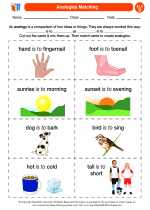 Analogies Matching
Analogies Matching  Activity Lesson
Activity Lesson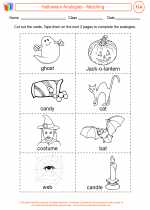 Halloween Analogies - Matching
Halloween Analogies - Matching  Activity Lesson
Activity Lesson Animal Analogies - Matching
Animal Analogies - Matching  Activity Lesson
Activity Lesson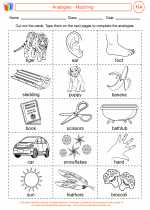 Analogies - Matching
Analogies - Matching  Activity Lesson
Activity Lesson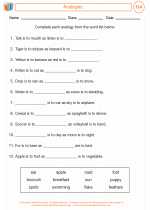 Analogies
Analogies  Activity Lesson
Activity Lesson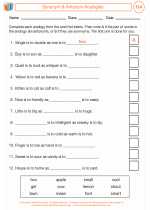 Synonym and Antonym Analogies
Synonym and Antonym Analogies  Worksheet/Answer key
Worksheet/Answer key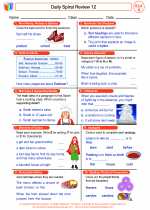 Daily Spiral Review 12
Daily Spiral Review 12  Worksheet/Answer key
Worksheet/Answer key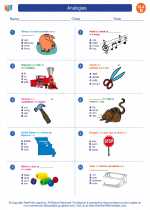 Analogies
Analogies  Worksheet/Answer key
Worksheet/Answer key Analogies
Analogies  Worksheet/Answer key
Worksheet/Answer key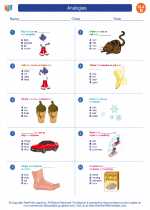 Analogies
Analogies  Worksheet/Answer key
Worksheet/Answer key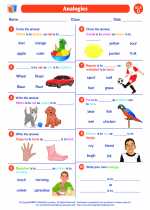 Analogies
Analogies  Worksheet/Answer key
Worksheet/Answer key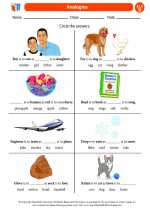 Analogies
Analogies  Worksheet/Answer key
Worksheet/Answer key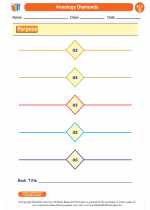 Anaology Diamonds
Anaology Diamonds  Worksheet/Answer key
Worksheet/Answer key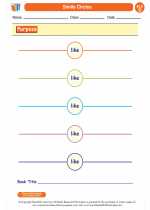 Simile Circles
Simile Circles  Worksheet/Answer key
Worksheet/Answer key Halloween Analogies
Halloween Analogies  Worksheet/Answer key
Worksheet/Answer key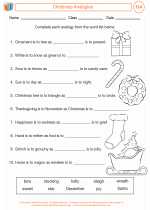 Christmas Analogies
Christmas Analogies  Worksheet/Answer key
Worksheet/Answer key Animal Analogies
Animal Analogies  Worksheet/Answer key
Worksheet/Answer key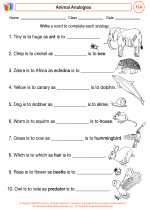 Animal Analogies
Animal Analogies  Worksheet/Answer key
Worksheet/Answer key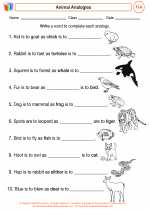 Animal Analogies
Animal Analogies  Worksheet/Answer key
Worksheet/Answer key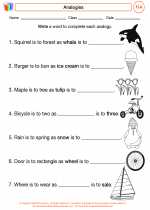 Analogies
Analogies  Worksheet/Answer key
Worksheet/Answer key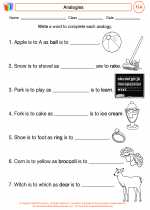 Analogies
Analogies  Worksheet/Answer key
Worksheet/Answer key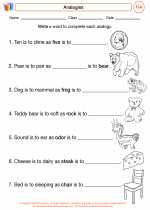 Analogies
Analogies  Worksheet/Answer key
Worksheet/Answer key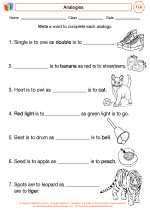 Analogies
Analogies  Worksheet/Answer key
Worksheet/Answer key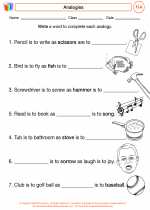 Analogies
Analogies  Worksheet/Answer key
Worksheet/Answer key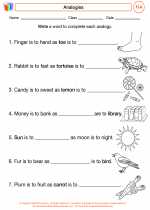 Analogies
Analogies  Worksheet/Answer key
Worksheet/Answer key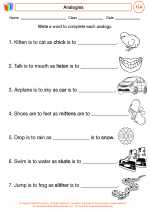 Analogies
Analogies 

 Activity Lesson
Activity Lesson
 Activity Lesson
Activity Lesson
 Activity Lesson
Activity Lesson
 Activity Lesson
Activity Lesson
 Activity Lesson
Activity Lesson
 Activity Lesson
Activity Lesson
 Activity Lesson
Activity Lesson
 Worksheet/Answer key
Worksheet/Answer key
 Worksheet/Answer key
Worksheet/Answer key
 Worksheet/Answer key
Worksheet/Answer key
 Worksheet/Answer key
Worksheet/Answer key
 Worksheet/Answer key
Worksheet/Answer key
 Worksheet/Answer key
Worksheet/Answer key
 Worksheet/Answer key
Worksheet/Answer key
 Worksheet/Answer key
Worksheet/Answer key
 Worksheet/Answer key
Worksheet/Answer key
 Worksheet/Answer key
Worksheet/Answer key
 Worksheet/Answer key
Worksheet/Answer key
 Worksheet/Answer key
Worksheet/Answer key
 Worksheet/Answer key
Worksheet/Answer key
 Worksheet/Answer key
Worksheet/Answer key
 Worksheet/Answer key
Worksheet/Answer key
 Worksheet/Answer key
Worksheet/Answer key
 Worksheet/Answer key
Worksheet/Answer key
 Worksheet/Answer key
Worksheet/Answer key
 Worksheet/Answer key
Worksheet/Answer key
 Worksheet/Answer key
Worksheet/Answer key

The resources above cover the following skills:
Reading
Develop and apply skills to the reading process.
Vocabulary
Develop an understanding of vocabulary by:
Completing analogies